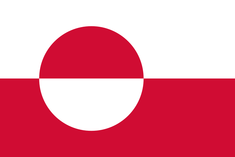Featured Quizzes
User Quizzes
Create Quiz
Data and Charts
Badges and Games
About JetPunk
JetPunk Shop
Dark Mode

Third Most Popular Language in Every Country (with a map)
Think naming the most and second most popular language in every country is too easy? Try to fill in the map of the world by naming the third most popular language in each country!
Source- the gate website article and other Wikipedia websites. The data is mainly derived from the CIA World Factbook and Ethnologue
Focusing on L1 languages (people's native language) if there is data (if there is no data for the L1, we would look at L2 languages), for the more thorough methodology, see the comment section
For the creole/patois languages, please be specific and answer either "parent language + creole" or "origin + creole". Also, don't forget the Sign Languages
Need more content? Try Most Popular Language in Every Country (with a map) and Second most Popular Language in Every Country (with a map)!
Rate:
Last updated: March 14, 2024
You have not attempted this quiz yet.
More quiz info >>
| First submitted | May 5, 2021 |
| Times taken | 488 |
| Average score | 50.5% | Report this quiz | Report |
8:00
Enter answer here
0
/ 196 guessed
Time Used
00:00
Best Time
00:00
The quiz is paused. You have remaining.
Scoring
You scored / = %
This beats or equals
% of test takers
also scored 100%
The average score is
Your high score is
Your fastest time is
Keep scrolling down for answers and more stats ...
Show Missing Countries
|
|
New and Popular
Save Your Progress
Quizzes about Language
Quiz series by fromTtoC
...
Copyright H Brothers Inc, 2008–2024
Contact Us | Go To Top | View Mobile Site

The data (as of 2019) mainly focus on L1 languages, i.e., people’s primary languages to make sure we were only including languages that were actually used on a daily basis.
We started out by gathering data from the CIA World Factbook and listed the second most commonly used languages in all the countries we could, and then filled in any gaps and double-checked the information with the world language website, Ethnologue.
Whenever any data from Ethnologue didn’t match up with the CIA’s data (as it includes L2 languages as well), we swapped it for the Ethnologue data.
In some rare cases, there is no data for the second commonly used languages in a country for the two website mentioned above, I would check it with the Wikipedia page and other websites, which might include the L2 languages.
It is very likely that some answers are not correct, please feel free to correct me in the comment section!
Wu, Hakka and Mandarin are all parts of the Chinese linguistic family and Chinese itself is technically not a language.
When people say Chinese, they generally refer to Mandarin. Most speakers of other Chinese languages are also fluent in Mandarin and frequently communicate in that (as a native Wu speaker, I can confirm that) so I think it's fair to change all answers currently labelled as "Chinese" to Mandarin
Regardless, nice quiz
Unfortunately, we are mainly focus about the L1 languages and some countries’ government just count all Chinese language, including Mandarin, Cantonese, Wu, Hakka, Southern Min, etc. as one single language. It is impossible to set them apart and not everyone speaks Chinese languages as a first language speaks Mandarin as their first language (Cantonese may be a large amount of number). Hope you would understand!
By the way, I’m from Taiwan, so I could speak two Chinese languages, Mandarin and Taiwanese (Southern Min). I want to learn Yue and Wu though